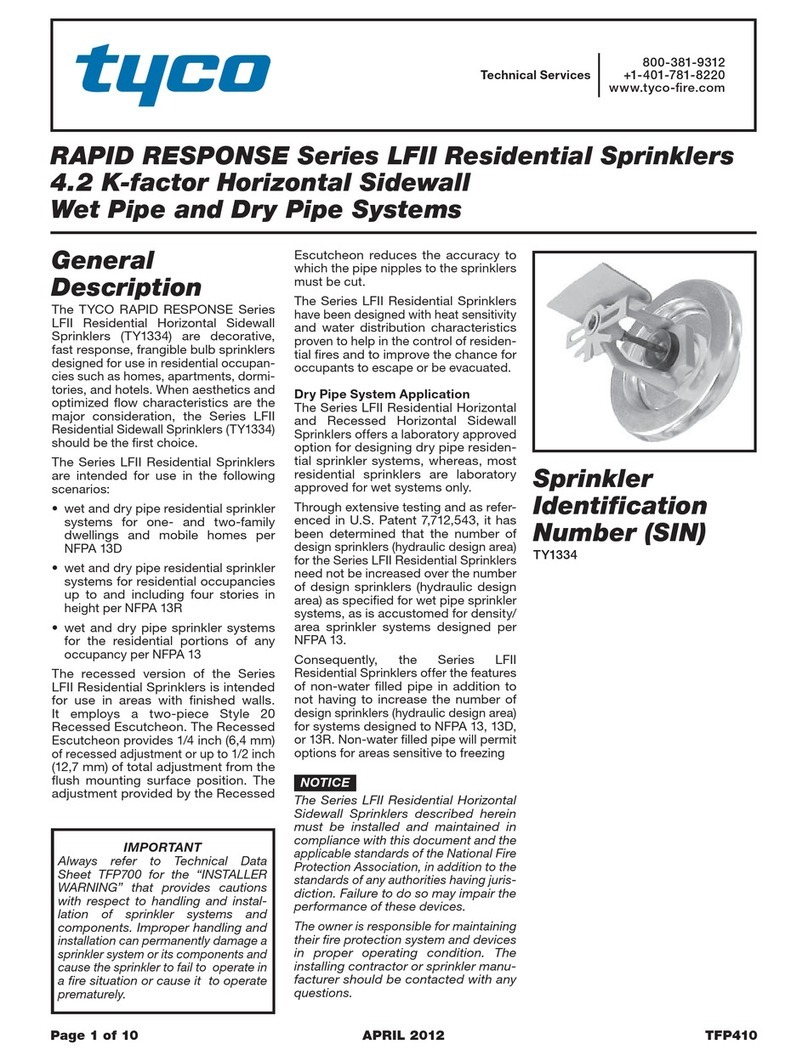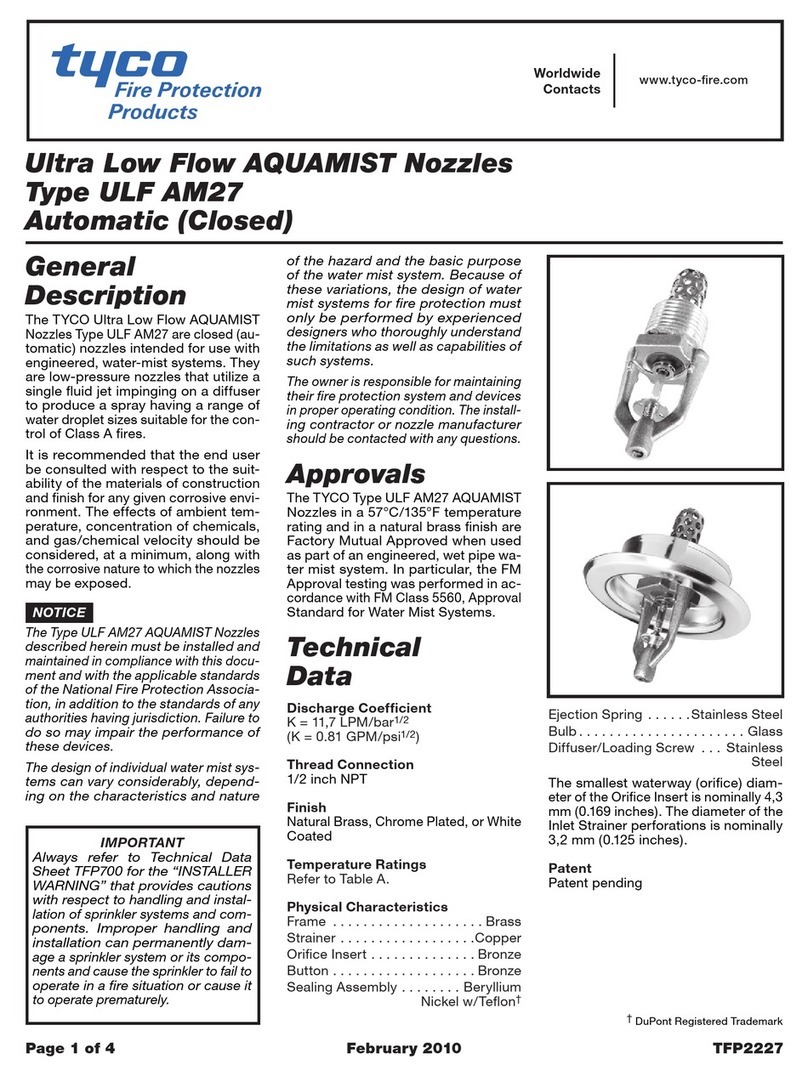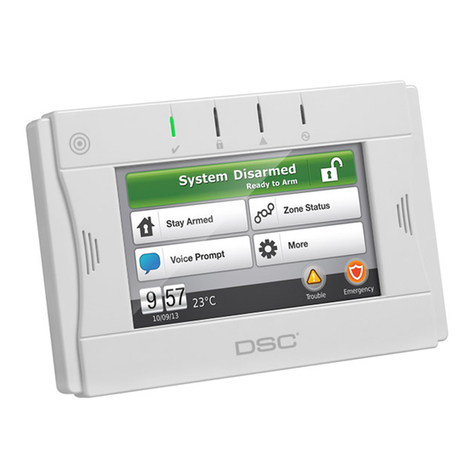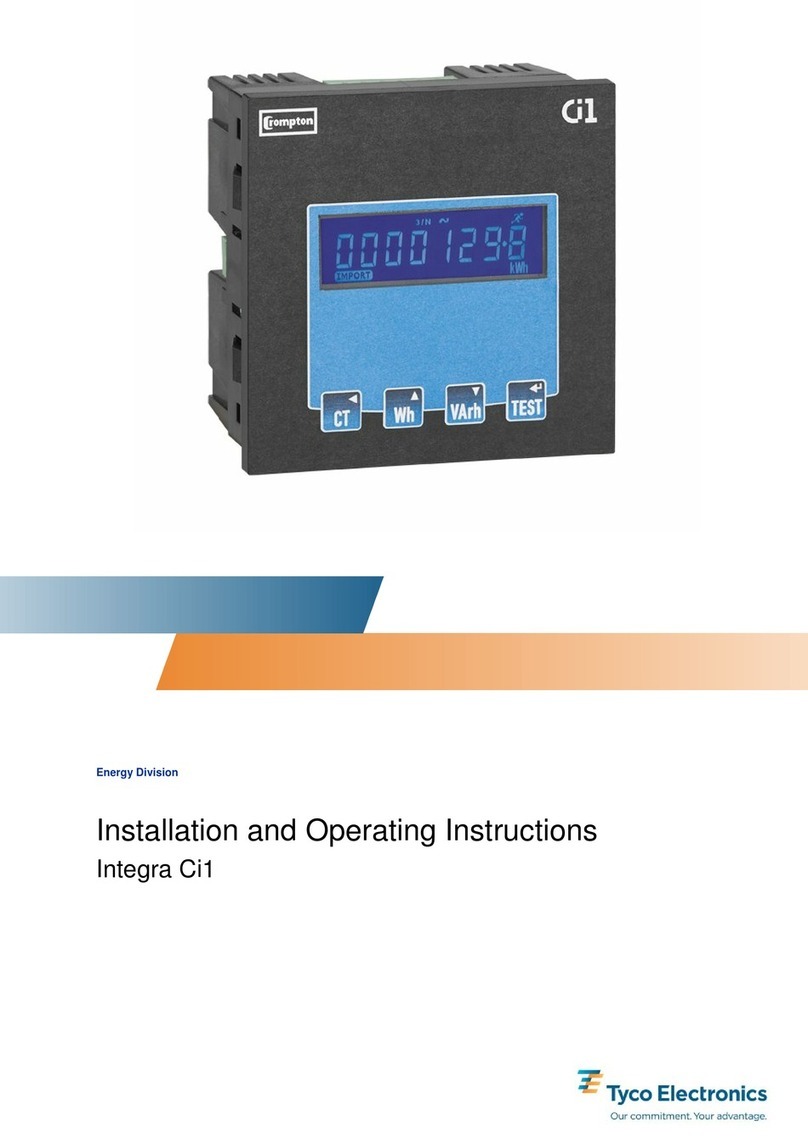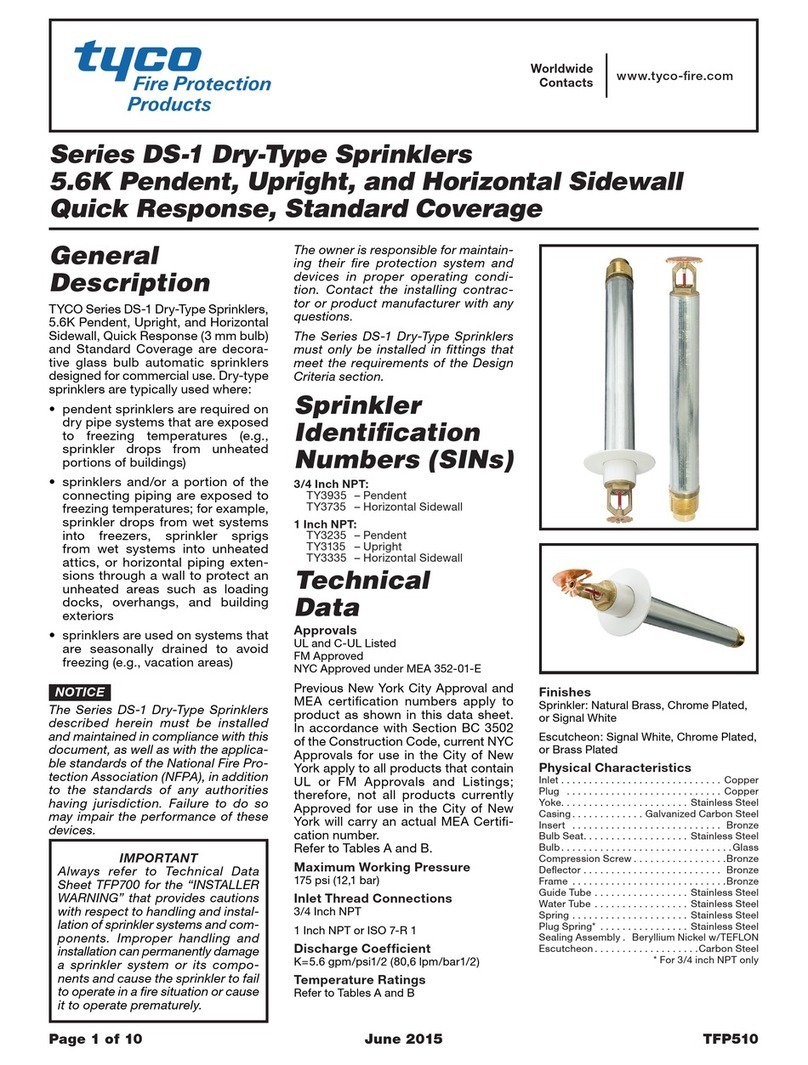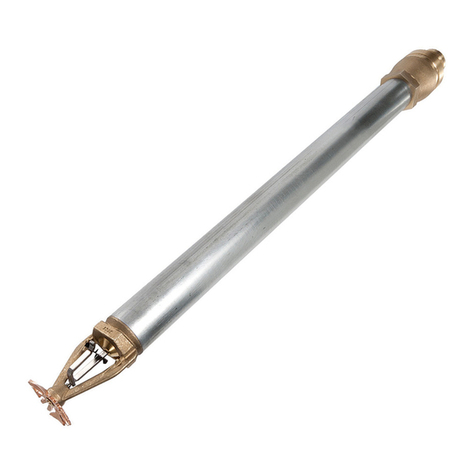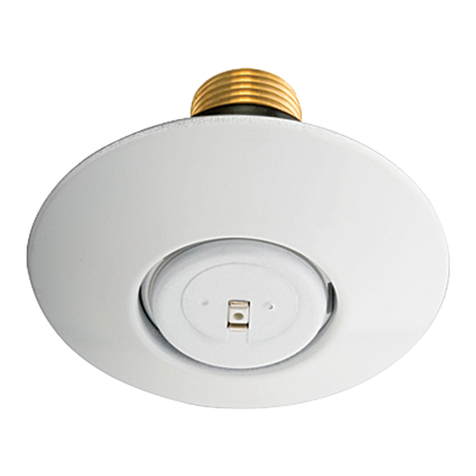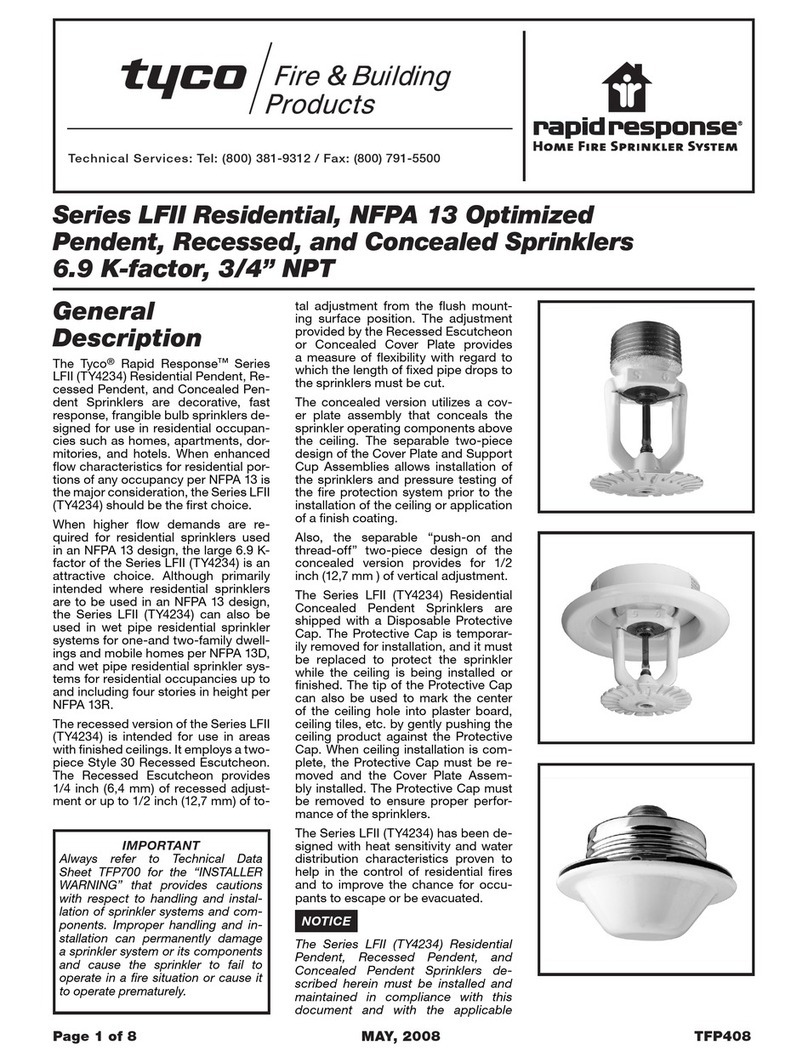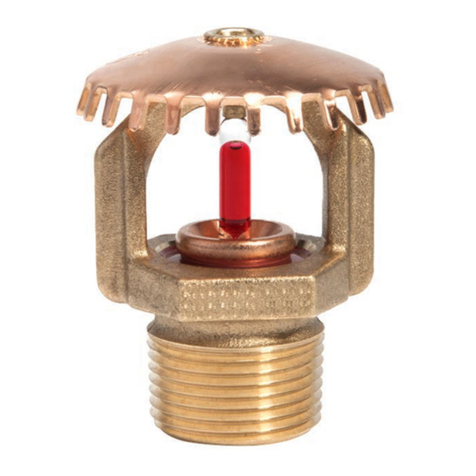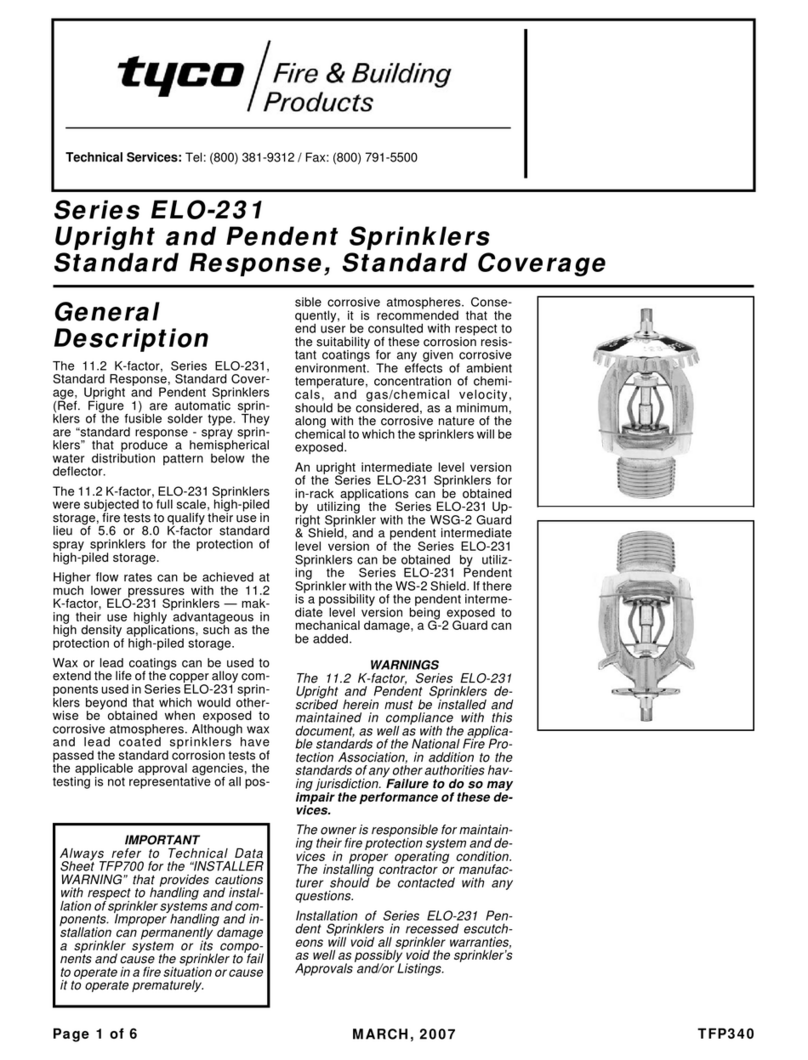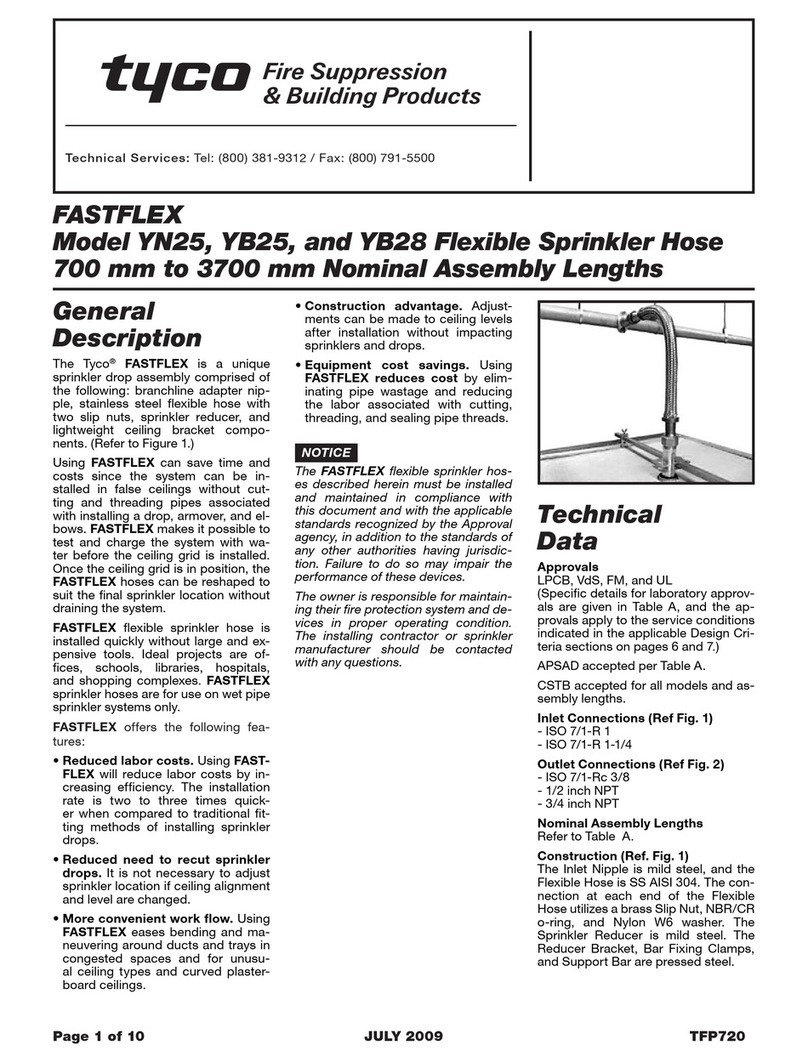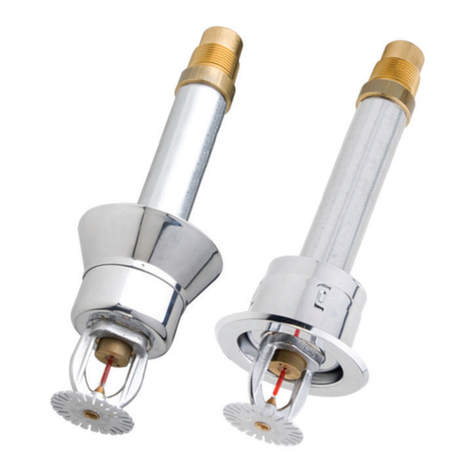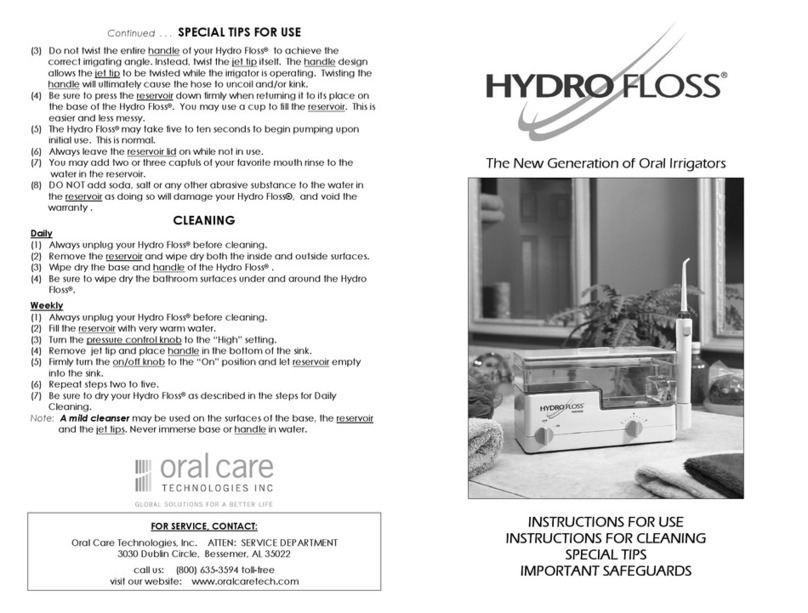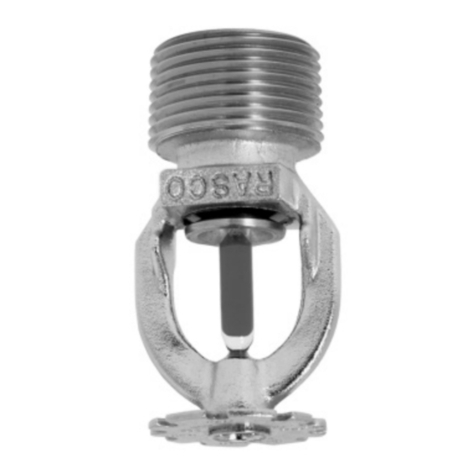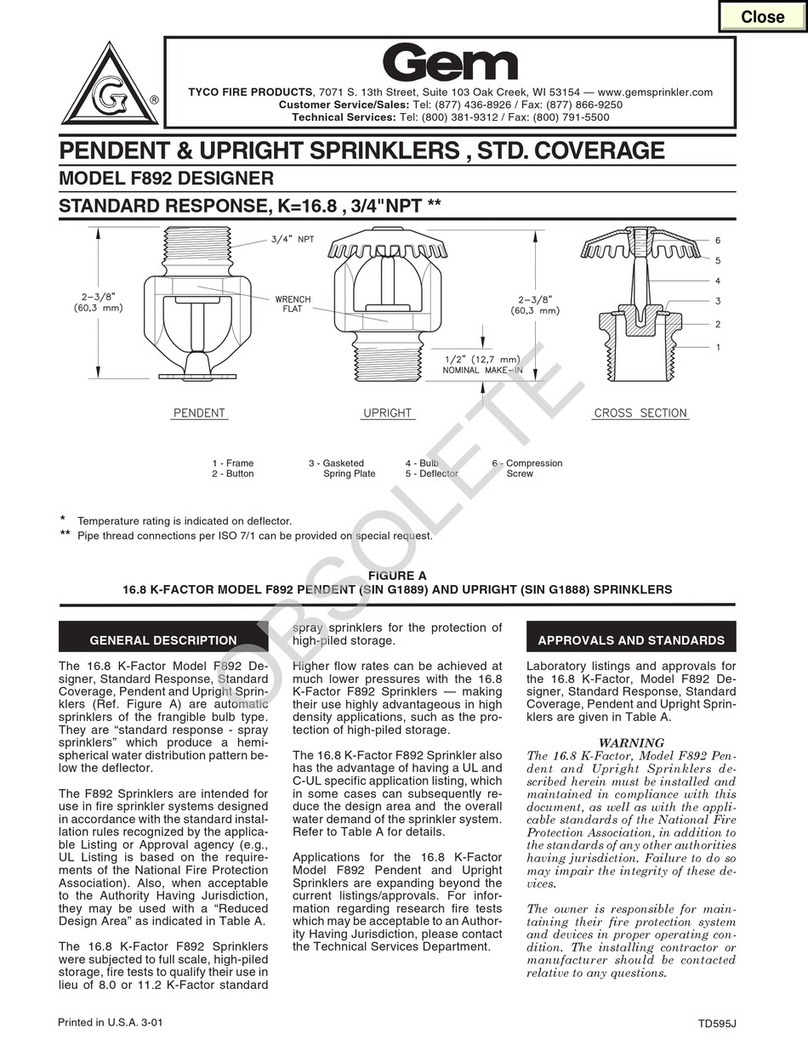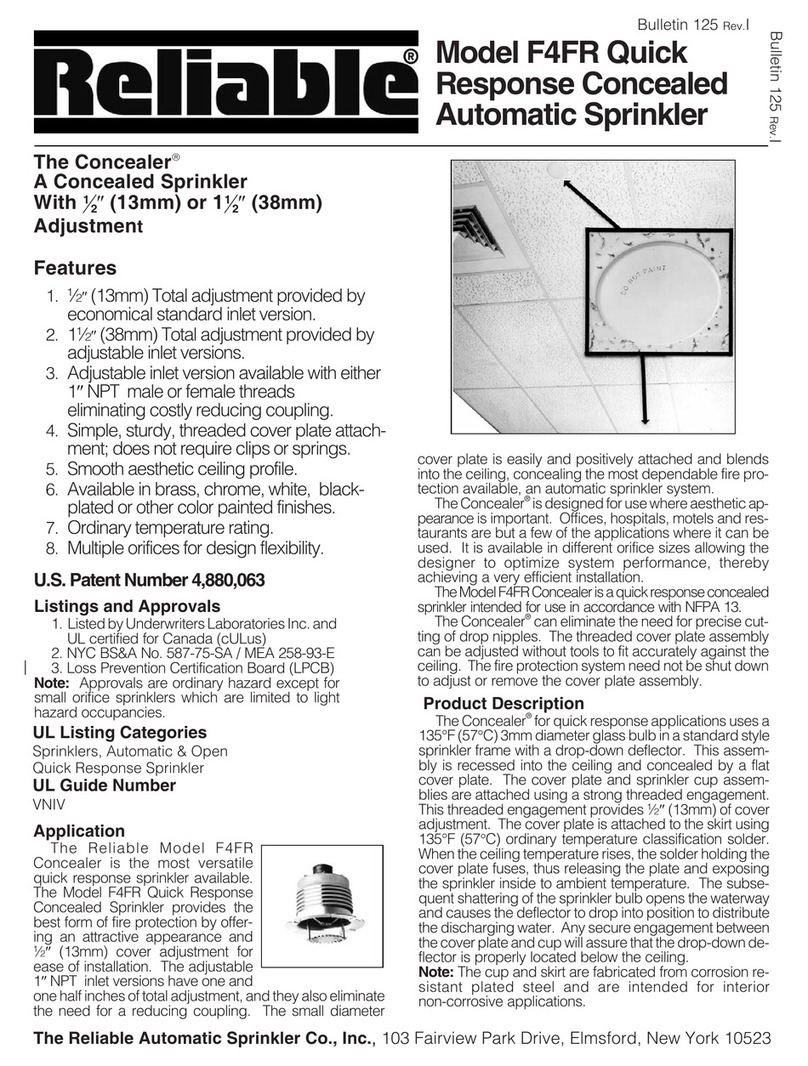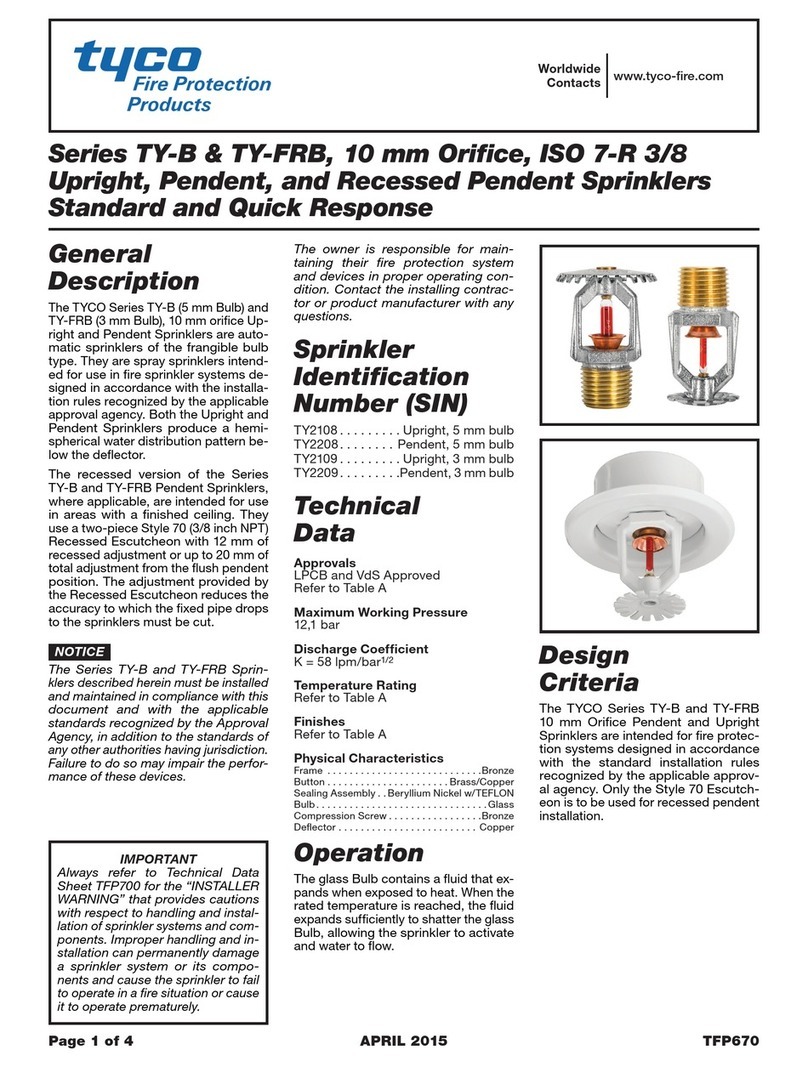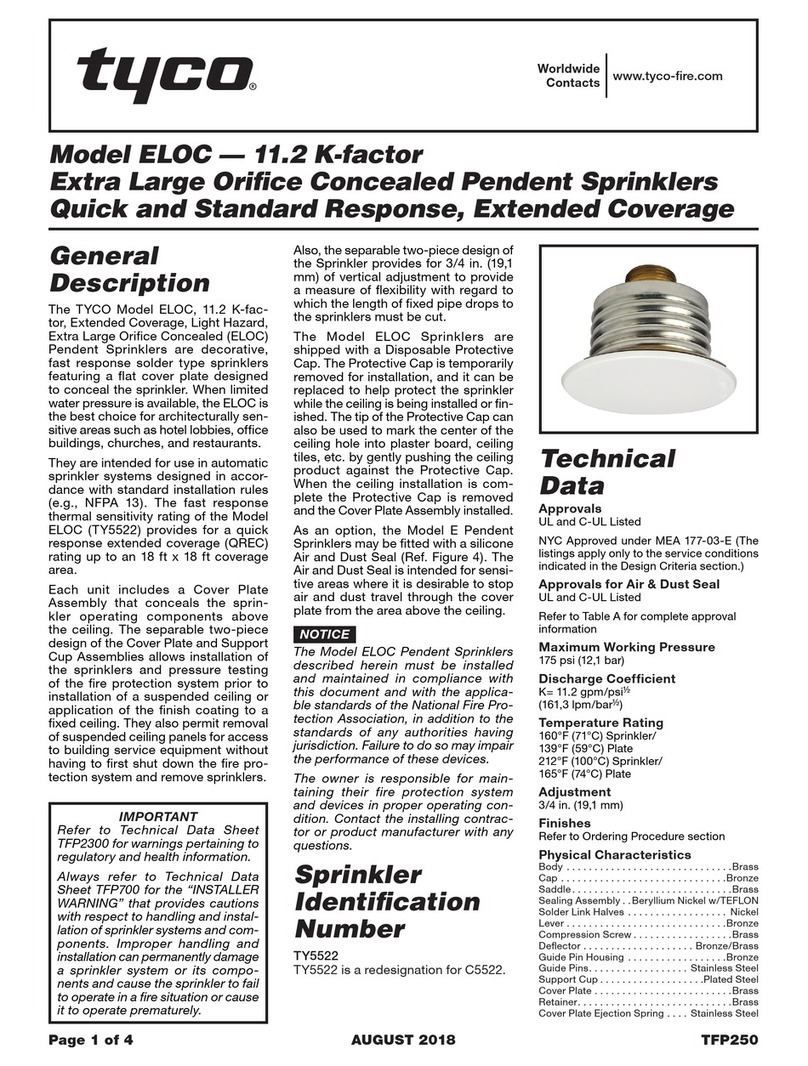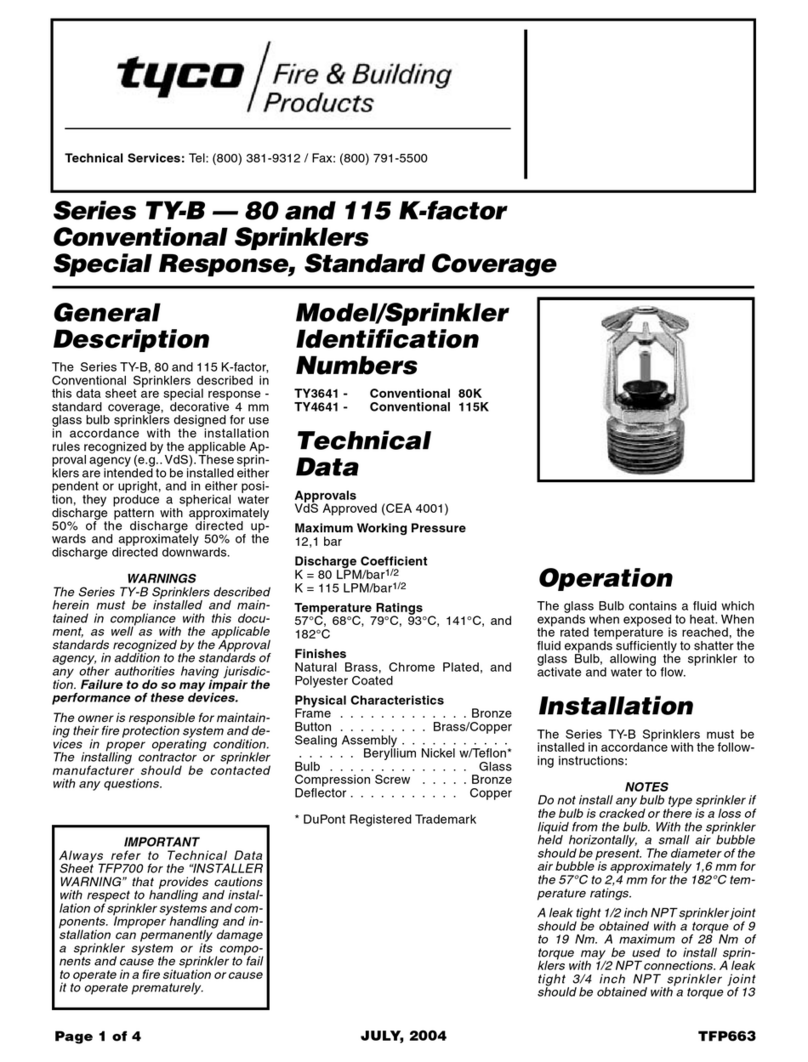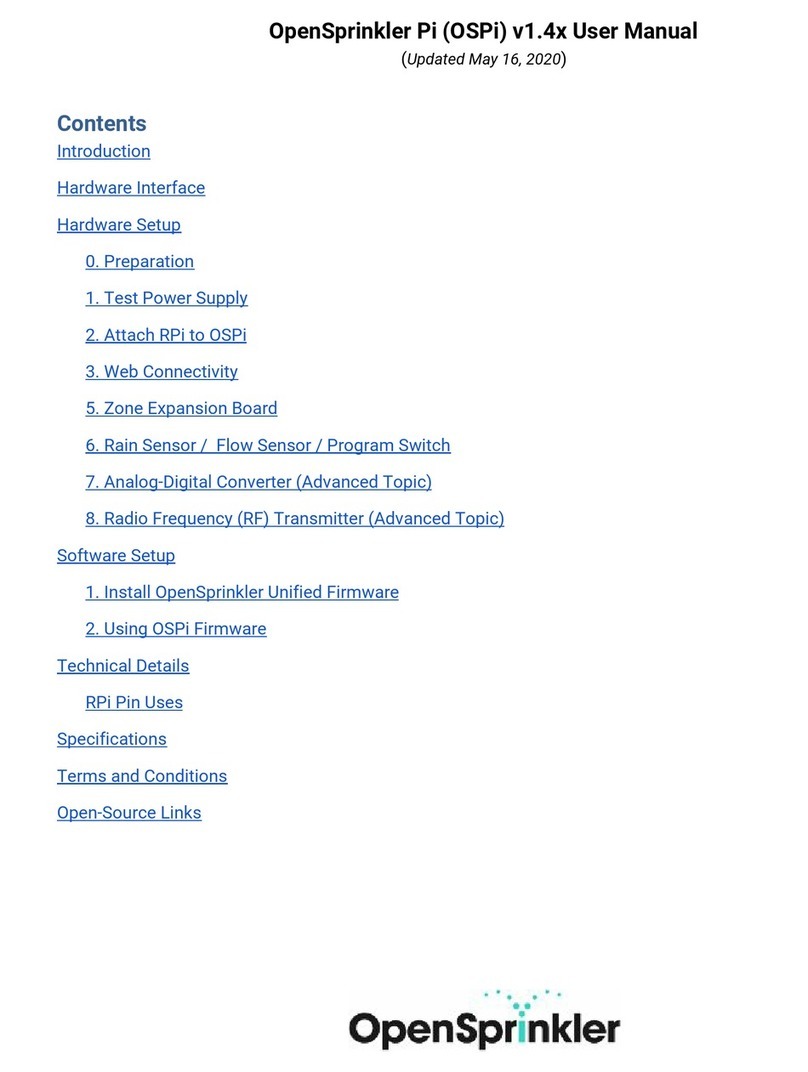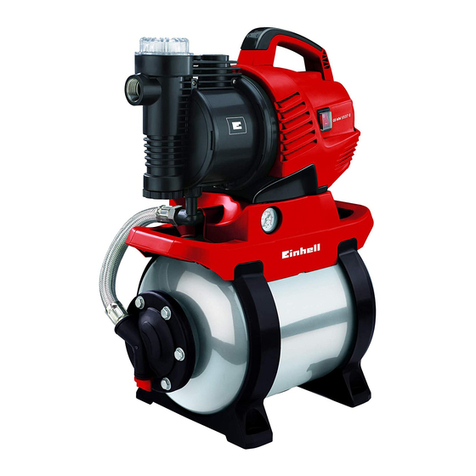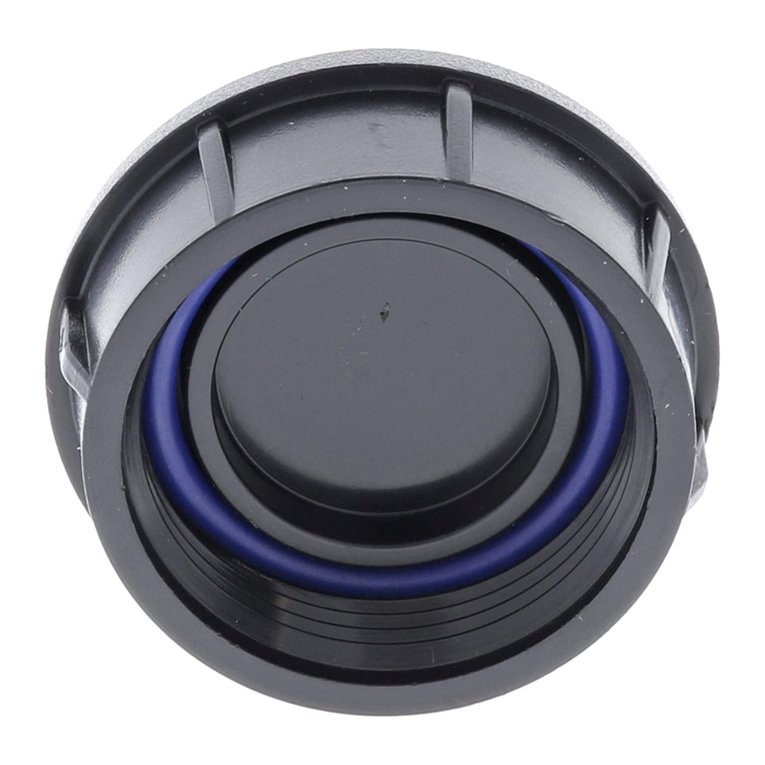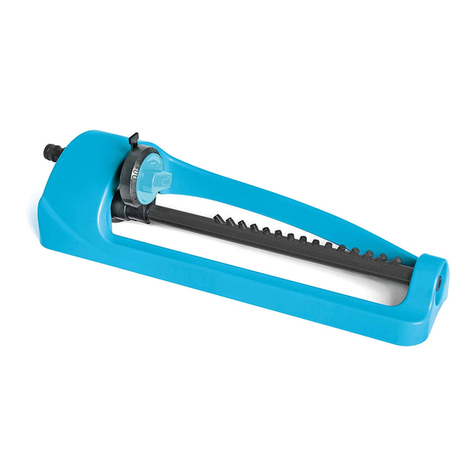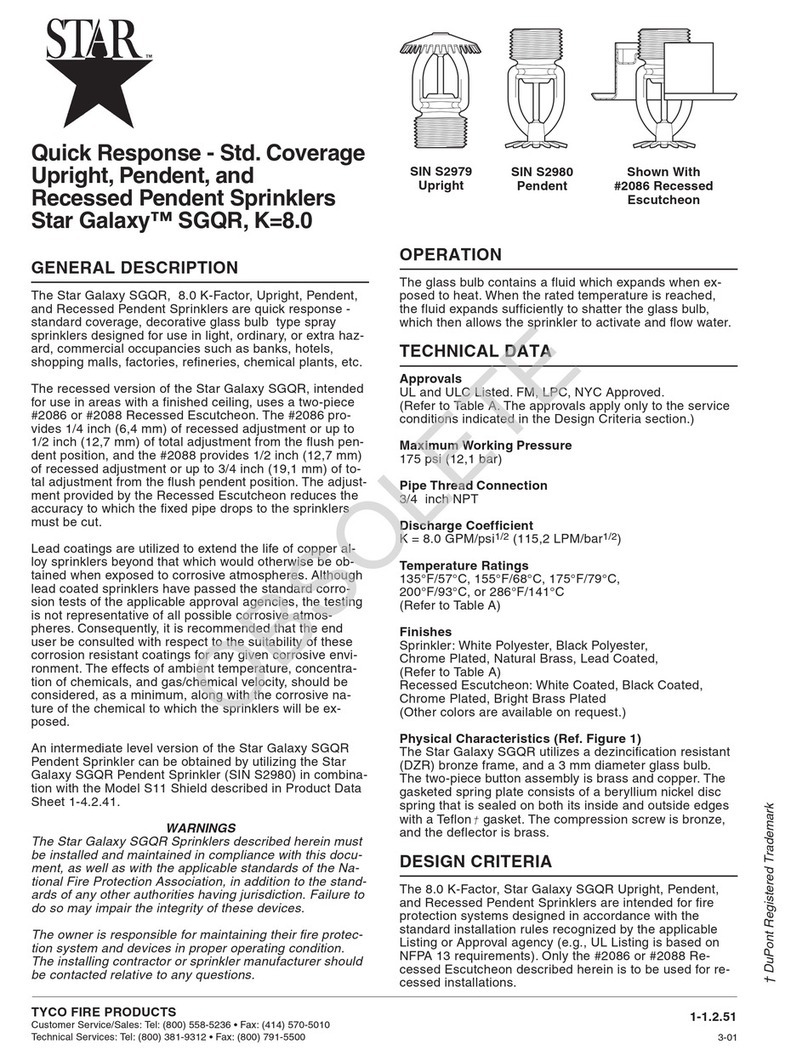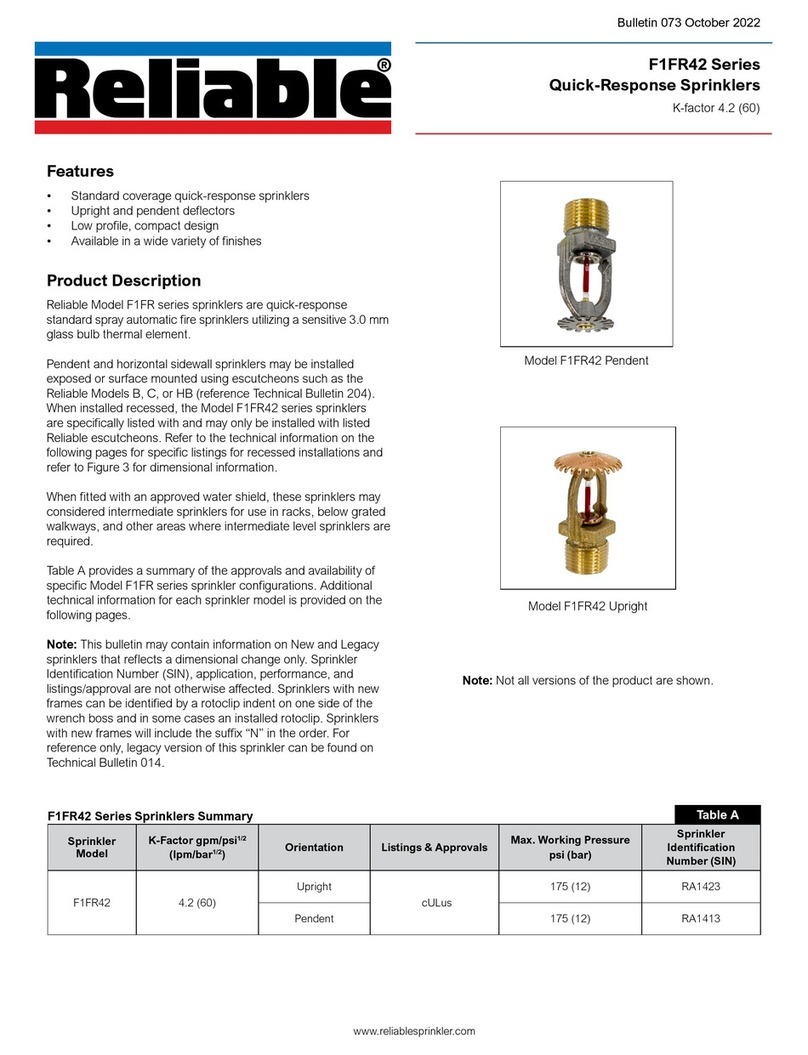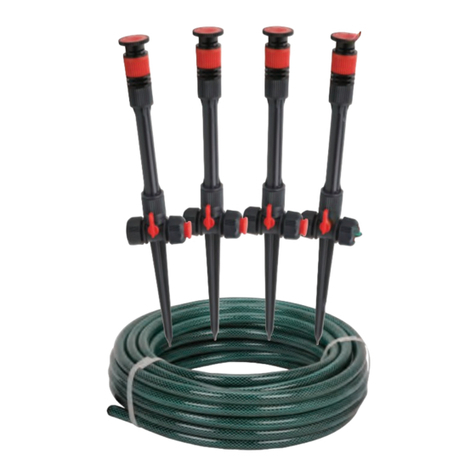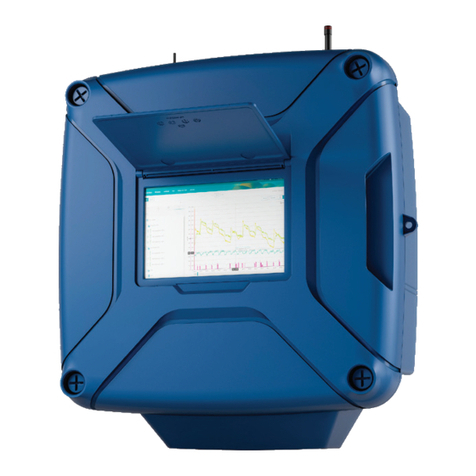
TFP176
Page 3 of 6
Series TY-FRB Horizontal and
Vertical Sidewall Sprinkler
Installation
The Series TY-FRB Horizontal and
Vertical Sidewall Sprinklers must be
installed in accordance with the fol-
lowing instructions.
Step 1. Horizontal sidewall sprinklers
are to be installed in the horizontal
position with their centerline of water-
way perpendicular to the back wall and
parallel to the ceiling. The word “TOP”
on the Deflector is to face towards the
ceiling.
Vertical sidewall sprinklers are to be
installed in the pendent or upright
position with the arrow on the Deflec-
tor pointing away from the wall.
Step 2. With pipe thread sealant
applied to the pipe threads, hand
tighten the sprinkler into the sprinkler
fitting.
Step 3. Tighten the sprinkler into the
sprinkler fitting using only the W-Type 6
Sprinkler Wrench as shown in Figure 5.
Apply the W-Type 6 Sprinkler Wrench
to the wrench flats as shown in Figure
1 and Figure 2.
Series TY-FRB Recessed
Horizontal Sidewall Sprinkler
Installation
The Series TY-FRB Recessed Horizon-
tal Sidewall Sprinklers must be installed
in accordance with this section.
Step A. Recessed horizontal sidewall
sprinklers are to be installed in the hori-
zontal position with their centerline of
waterway perpendicular to the back
wall and parallel to the ceiling. The
word “TOP” on the Deflector is to face
towards the ceiling.
Step B. After installing the Style 10 or
20 Mounting Plate over the sprinkler
threads, hand tighten the sprinkler into
the sprinkler fitting.
Step C. Tighten the sprinkler into the
sprinkler fitting using only the W-Type
7 Recessed Sprinkler Wrench, as
shown in Figure 6. Apply the W-Type
7 Recessed Sprinkler Wrench to the
sprinkler wrench flats as shown in
Figure 1.
Step D. After the ceiling has been
installed or the finish coat has been
applied, slide on the Style 10 or 20
Closure over the Series TY-FRB Sprin-
kler and push the Closure over the
Mounting Plate until its flange comes
in contact with the ceiling.
Care and
Maintenance
The Series TY-FRB, 5.6 K-factor, Hori-
zontal and Vertical Sidewall Sprinklers
must be maintained and serviced in
accordance with this section.
Before closing a fire protection system
main control valve for maintenance
work on the fire protection system that
it controls, permission to shut down the
affected fire protection system must be
obtained from the proper authorities
and all personnel who may be affected
by this action must be notified.
Absence of an escutcheon, which is
used to cover a clearance hole, may
delay the time to sprinkler operation in
a fire situation.
Sprinklers that are found to be leaking
or exhibiting visible signs of corrosion
must be replaced.
Automatic sprinklers must never be
painted, plated, coated or other-
wise altered after leaving the factory.
Modified sprinklers must be replaced.
Sprinklers that have been exposed to
corrosive products of combustion, but
have not operated, should be replaced
if they cannot be completely cleaned
by wiping the sprinkler with a cloth or
by brushing it with a soft bristle brush.
Care must be exercised to avoid
damage to the sprinklers before,
during, and after installation. Sprin-
klers damaged by dropping, striking,
wrench twist/slippage, or the like, must
be replaced. Also, replace any sprikler
that has a cracked bulb or that has lost
liquid from its bulb. (Ref. Installation
Section).
The owner must assure that the sprin-
klers are not used for hanging any
objects and that the sprinklers are only
cleaned by means of gently dusting
with a feather duster; otherwise, non-
operation in the event of a fire or inad-
vertent operation may result.
Frequent visual inspections are rec-
ommended to be initially performed
for corrosion resistant coated sprin-
klers, after the installation has been
completed, to verify the integrity
of the corrosion resistant coating.
Thereafter, annual inspections per
NFPA 25 should suffice; however,
instead of inspecting from the floor
level, a random sampling of close-up
visual inspections should be made, so
as to better determine the exact sprin-
kler condition and the long term integ-
rity of the corrosion resistant coating,
as it may be affected by the corrosive
conditions present.
The owner is responsible for the
inspection, testing, and maintenance of
**
*
CROSSSHOWN SHOWN
1-1/2"
(38,1 mm)
ESCUTCHEON
PLATE SEATING
SURFACE
2-3/16"
WRENCH
FLATS
1/2"
NPT
7/16"
(11,1 mm)
NOMINAL
MAKE-IN
ARROW MUST
POINT AWAY
FROM AND BE
PERPENDICULAR
TO THE BACK
WALL SURFACE
7
2-3/16"
(55,6 mm)
3
1
6
5
2
4
connections
per ISO 7-1 can
be provided on
special request.
rating is
indicated on
Deector.
2
Sealing
Assembly
Button
-
3-
6-Deector
Compression
Screw
5-
FLOW
Spring
FIGURE 2
5.6 K-FACTOR QUICK RESPONSE
SERIES TY-FRB VERTICAL SIDEWALL (TY3431) SPRINKLERS
